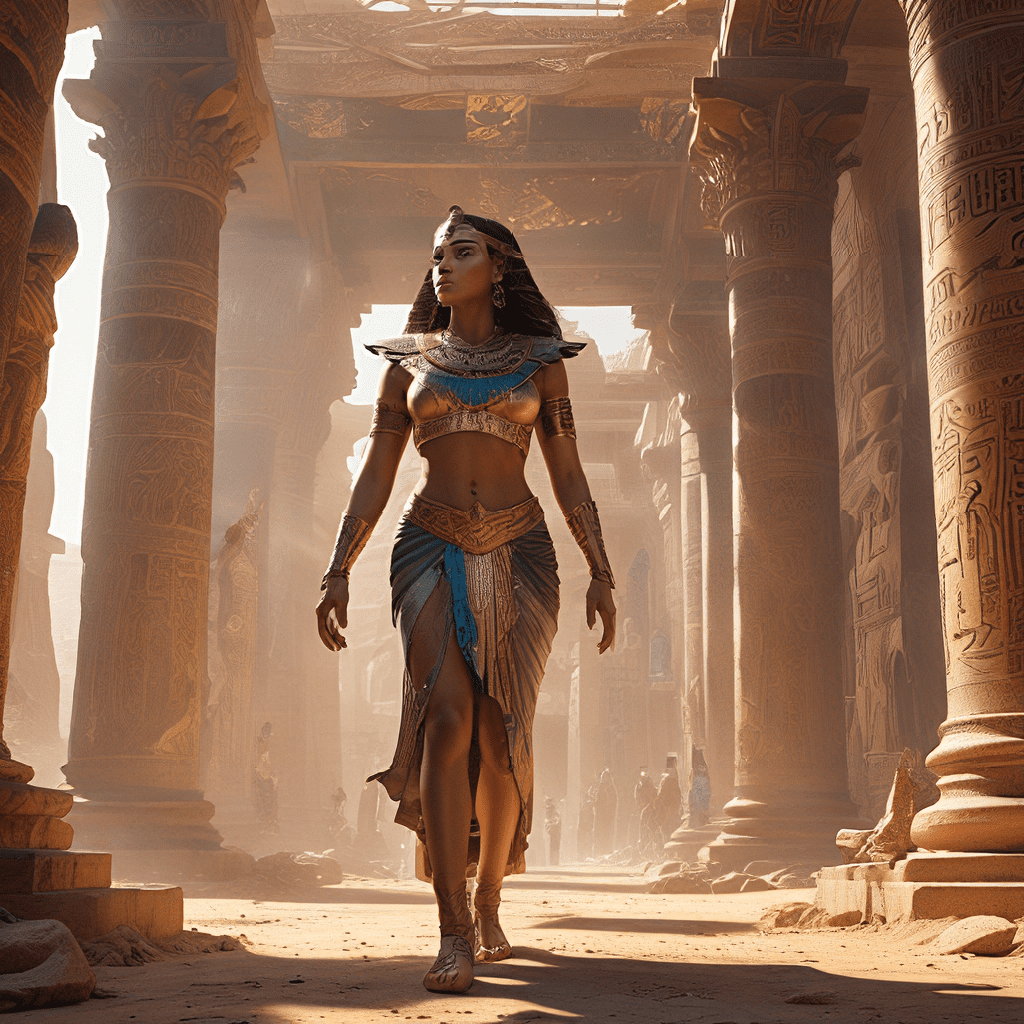The Divine Architects: The Creation of the World in Egyptian Mythology
1. The Primordial Waters of Nun
In the heart of Egyptian mythology lies the concept of Nun, the primordial waters. This vast, boundless, and chaotic sea existed before the creation of the universe, representing a state of pure nothingness and potential. Nun was a realm of infinite darkness and formlessness, where nothing existed except the raw energy of creation. It was within this primordial sea that the universe would eventually take shape. The Egyptian belief in Nun highlights the importance of water as a life-giving force and its central role in the creation myth.
2. The Emergence of Atum
From the depths of Nun, the self-created god Atum emerged. Atum, a solitary being, represented the first entity in existence. He was the source of all creation, embodying the power of the sun and possessing the potential to bring order to the chaos of Nun. The Egyptians believed that Atum rose from the primordial waters, symbolizing the transition from nothingness to existence and the beginning of the world’s creation. Atum’s emergence from Nun emphasizes the transformative power of creation and the universe’s birth from a state of pure potential.
3. The Creation of the Ennead
Atum, the solitary creator, was not content with being alone. Through a process of self-procreation, he gave birth to the Ogdoad, eight primordial deities embodying the forces of chaos. These deities, representing both male and female aspects, were responsible for the initial shaping of the universe. From them, Atum further created the Ennead, the nine major gods. The Ennead, which included deities like Ra, Shu, Tefnut, Geb, and Nut, were responsible for bringing order and structure to the newly formed world. The Ennead represents the intricate relationships between the different aspects of creation and the gods’ role in maintaining balance and harmony.
4. The Role of Shu and Tefnut
Shu, the god of air, emerged as a vital element in the creation process. He separated the sky, personified by the goddess Nut, from the Earth, ruled by the god Geb. This separation brought structure and distinct boundaries to the emerging world, symbolizing the separation of the heavens and the earth. Tefnut, the goddess of moisture, balanced Shu’s power and provided the life-giving force necessary for the world to flourish. Together, they represent the interconnectedness of the natural world and the essential role of air and moisture in creating a habitable environment.
5. The Birth of Geb and Nut
Shu and Tefnut, the children of Atum, gave birth to Geb, the god of Earth, and Nut, the goddess of the sky. Geb and Nut, symbolizing the physical world and the celestial vault, represent the natural order and the interconnectedness of the heavens and the earth. The Egyptians believed that Geb and Nut were responsible for the creation of all living things, highlighting the importance of the Earth and the sky in sustaining life.
6. The Cosmic Order
The creation of the world brought forth a need for cosmic order and justice, a concept known as Ma’at. Ma’at represented balance, harmony, truth, and justice in the universe. The Ennead, the nine major gods, played a crucial role in maintaining Ma’at, ensuring the stability of the world. They were responsible for upholding the natural laws, ensuring justice for the living and the dead, and maintaining a harmonious balance within the universe. The concept of Ma’at emphasizes the Egyptians’ deep respect for order and the importance of upholding the natural laws for a peaceful and prosperous society.
7. The Creation of Humanity
Khnum, the potter god, was responsible for creating humankind. He shaped humans on a potter’s wheel, breathing life into them and shaping their destinies. The other gods, including Atum and the Ennead, played a role in shaping humanity’s journey and ensuring their well-being. The creation of humans, a masterpiece of Khnum, highlights the Egyptians’ belief in the divine origin of humanity and the gods’ involvement in shaping humanity’s path.
8. The Importance of the Nile
The Nile River, the lifeline of ancient Egypt, held immense significance in their mythology. The annual flooding of the Nile, vital for agriculture and life, was seen as a reflection of the cyclical nature of creation. The Nile symbolized the life-giving force of the universe, representing the constant renewal and rejuvenation of the world. The Egyptians believed that the Nile’s floods were a direct result of the gods’ intervention, connecting the river to the divine power that nurtured their world.
9. The Afterlife and the Role of Osiris
The Egyptians believed in an afterlife, a journey to the underworld ruled by the god Osiris. Osiris, the god of the dead, judged the souls of the deceased and determined their fate in the afterlife. The journey to the underworld was a complex process, requiring the deceased to navigate the challenges and trials of the afterlife. The Egyptians’ belief in the afterlife reflects their deep connection to the divine and their desire for a prosperous and meaningful existence beyond this life. Osiris, the god of the dead, played a crucial role in guiding the deceased in their journey to the afterlife and ensuring that they received the proper judgment.




